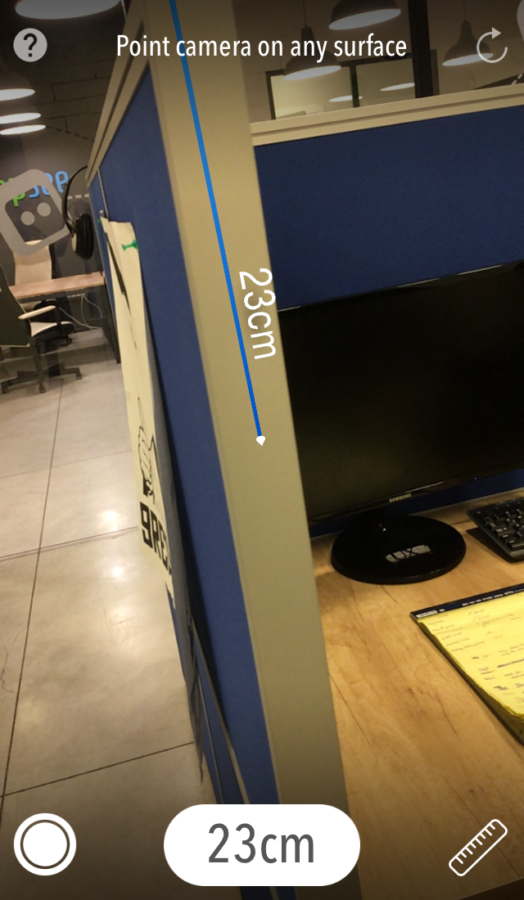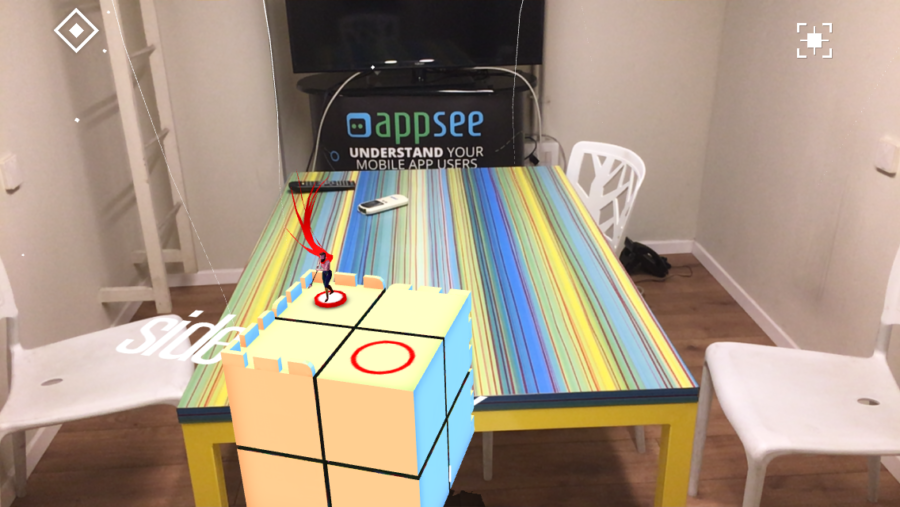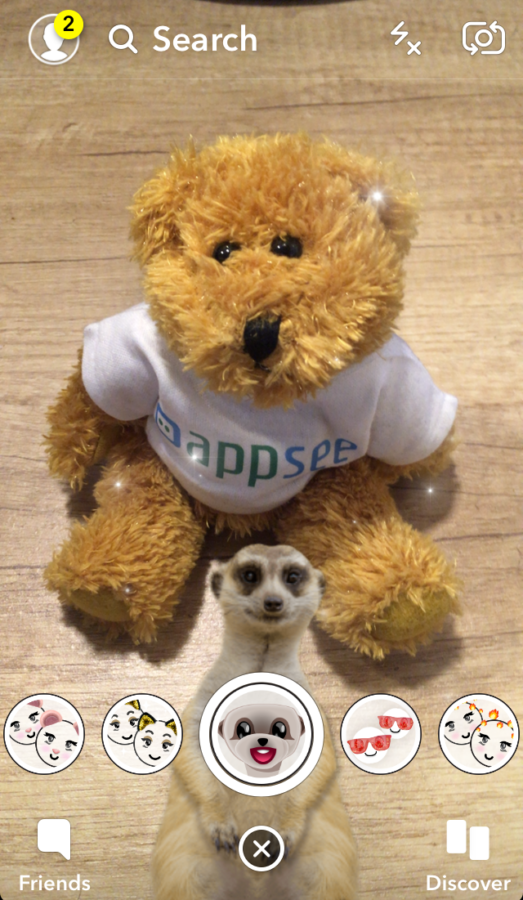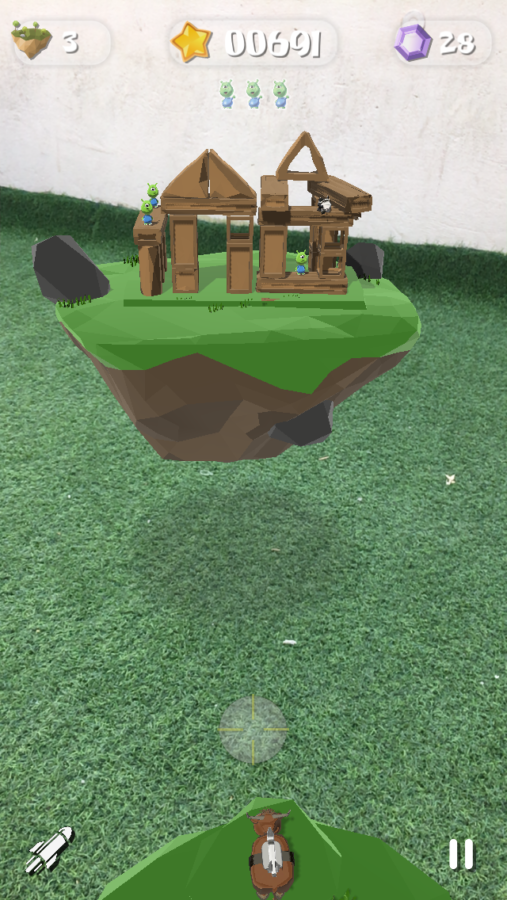AR apps have come a long way since we first added a rainbow filter on Snapchat and tossed a Pokéball at a wild Rattata in Pokémon Go. The AR app market is now experiencing significant growth among consumers. This surge is partly due to the launch of frameworks like Apple’s ARKit and Google’s ARCore, which just exited its beta phase last week after Google announced it at the MWC conference in Barcelona.
Armed with the technological powers of the world’s biggest tech giants, creative minds and innovative developers took off with the concept, and AR apps have become so many in number that they are now a category of their own. Day by day, our apps are jumping out of the screen and making their way into our world, breaking the digital fourth wall between the digital world we access on our devices and the physical, tangible world we inhabit.
Here are some awesome apps that show the fun, useful and sometimes truly amazing uses of augmented reality for mobile.
MeasureKit
Have you ever really needed to measure something but you didn’t have a ruler? It’s definitely a frustrating situation. Not anymore, though – AR to the rescue! MeasureKit is definitely one of the most useful apps around, as it uses AR for those times when you really need a ruler and don’t have one (or if you simply don’t want to carry a ruler around) – buying something at the hardware store, picking out furniture, or renovating your apartment. In its free version, it has the only three things you need in a ruler: it’s easy to use, it’s easy to read, and it measures things. You simply position the dot on the point where you’d like to start measuring, then move your phone to stretch the arrow over the desired surface. The app measures the surface or object as you move your device. In-app purchases let you buy a myriad of other handy features, such as measuring angles, leveling surfaces, and even measuring magnetic force.

We had fun measuring random corners of the Appsee office.
SketchAR
For those who never could draw a straight line but always wanted to, augmented reality is here to give us a second chance. SketchAR is a bit like drawing on tracing paper that you placed on an art history book, except that you do it with the help of your phone and it actually comes out looking nicer than anything I’ve ever drawn on my own. SketchAR has a myriad of designs to choose from, including animals, flowers, facial features and more. This concept is a great use of augmented reality in mobile, drawing (excuse the pun) on the easily accessible smartphone camera and on one of mankind’s oldest and most beloved hobbies.
The divide between the tangible and the digital is truly challenged in SketchAR, because the user has to manually calibrate the app by drawing four circles or crosses in the places indicated on the screen. For me, this took a few minutes of trial and error, including a few frantic taps and gestures both on screen and on paper. While unresponsive gestures are nothing new, AR does present completely new usability challenges for AR developers and designers. App analytics tools are a valuable resource for solving these issues.
Despite my lack of drawing skills, you can totally tell that this is a panda.
Euclidean Lands
Augmented reality is a particularly fun new feature in games, since it brings the action to the player’s own world. The ability to use AR in games is reinvigorating tabletop games, since now any surface can have the pieces and boards projected onto it, without the need for physical parts and without the danger of Lego pieces making little minefields on the living room floor. Also, AR allows game designers to make game physics more life-like than ever, letting players feel like they’re actually holding tangible objects. Euclidean Lands is a great example of this, a game that looks and feels like a cross between a puzzle, a chess board, and a maze, all wrapped up in a Rubik’s cube, as you help the hero navigate a mysterious, medieval world. The AR feature makes it feel like you’re really holding the three-dimensional board in the palm of your hand.
Ceci n’est pas une Rubik’s cube.
Snapchat
Snapchat has had a pretty bad past few weeks, but we can’t talk about AR without mentioning the social networking platform that was one of the first to get people jumping on the AR bandwagon. It’s hard to forget those bizarre snouts and ears that made us slightly uncomfortable. Last month, Snapchat introduced a new feature that allows users to design their own custom face lenses and make them as weird as they like – another AR tool going public that will no doubt be taken to new heights of creativity. Even the Appsee teddy bear gave it a try, and made a new friend:
They had a very productive meeting.
Rocket Cows
First, there was AngryBirds, now there is RocketCows. In this physics-based puzzle game, the cows have been abducted by aliens and the aliens have taken their princess, Princess Clover. Your job is to throw the cows, armed with rockets, onto the alien stronghold, which in AR becomes your coffee table, your desk, or the seat in front of you on the bus. Within seconds you can be flinging kamikaze cows onto their little green foes, and with 80 levels and lots of surprises along the way, Rocket Cows can keep users entertained for a while. The only trouble with Rocket Cows is the difficulty finding a surface for the AR feature to start – a problem that affects a lot of AR apps, especially those developed with the ARKit. Luckily, only pixelated animals were harmed in the making of this game.
We got a close look at RocketCows’ bovine artillery in AR mode.
To Sum Up
AR is awesome and it’s here to stay. With features and tools that range from the life-savingly useful to the quirky and fun, AR apps bring this cutting-edge technology into our hands, and with AR SDKs available to developers and creative minds everywhere, we can be sure that they will keep on coming.



